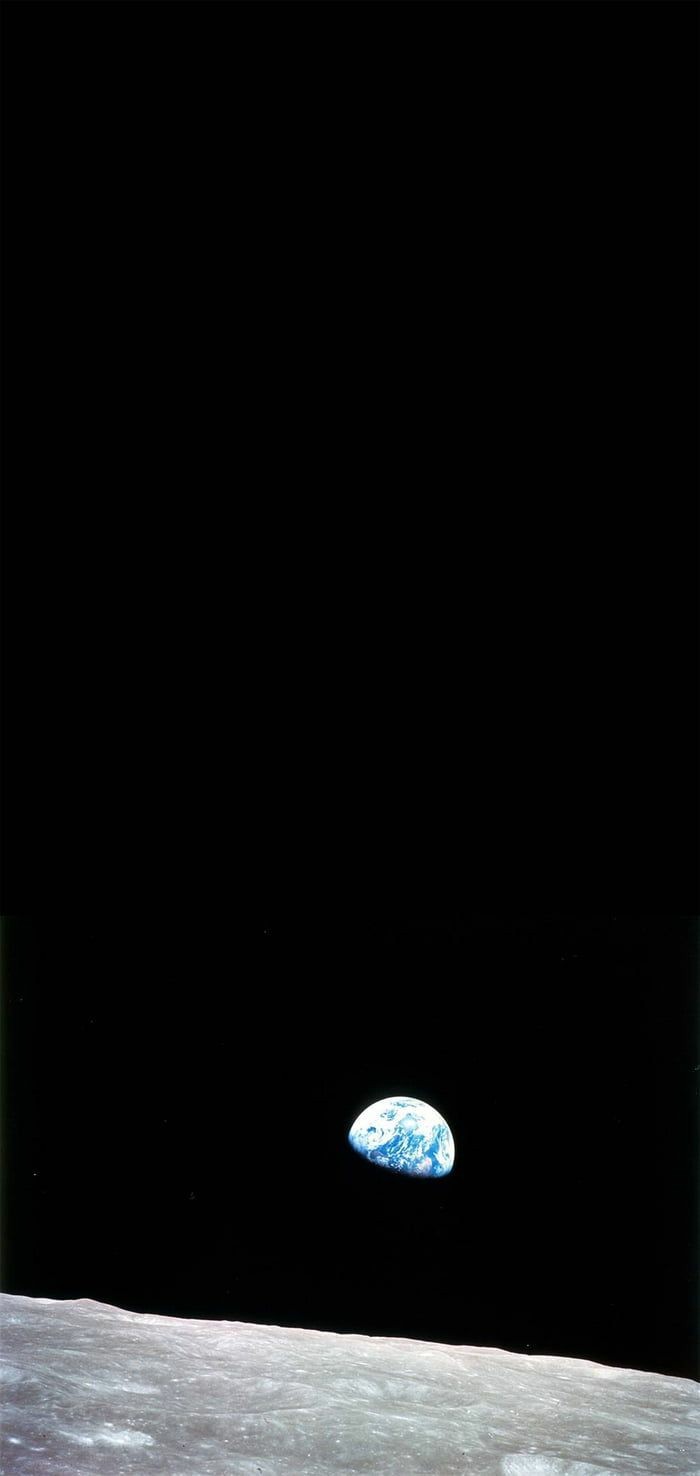Titan As Seen Through Three Different Filters, Captured On May 15th, 2013 Via Imaging Science Subsystem

Titan as seen through three different filters, captured on May 15th, 2013 via Imaging Science Subsystem (ISS) from 1.55 million miles (2.49 million kms) away.
Image Credit : NASA / JPL / SSI
More Posts from Spacenik and Others

Earthrise, Bill Anders, 1968.

Boomerang Nebula – the coldest known place in Space, remastered.
Credit : geckzilla//Flickr

Mile wide potentially hazardous asteroid to whizz past Earth tonight. Asteroid 1997 BQ — first identified in January of 1997, is hurtling towards us at an approximate speed of 13.3 km per second and will "closely approach" our planet on the evening of 21st May 2020. According to NASA estimates it will be a safe flyby with the asteroid passing within 3.8 miles of Earth, that's about 16 times the distance between Earth and the Moon.
Source: NASA

Utopia on Mars Image Credit: NASA, The Viking Project, M. Dale-Bannister (Washington University)
Explanation: Expansive Utopia Planitia on Mars is strewn with rocks and boulders in this 1976 image. Constructed from the Viking 2 lander's color and black and white image data, the scene approximates the appearance of the high northern martian plain to the human eye - NASA

Moon over Andromeda
Composite Image Credit & Copyright: Adam Block and Tim Puckett
Astronauts at work in space.
Credit : Pinterest
Majestic Godzilla galaxy or UGC 2885, 2.5 million times wider than our home galaxy Milky Way, with one trillion stars in its crib, captured by Hubble


Source : NASA&Hubble

Jupiter and Ganymede in near – UV and blue, jointly captured by Juno aircraft, remastered by Judy Schmidt
Image Credit : Judy Schmidt via Flickr

WISE helps map the beautiful spiral arms of our galaxy Milky Way.
WISE mission – NASA
Credit : NASA/Twitter
-
 spiritsandsuchconsultationoffice liked this · 8 months ago
spiritsandsuchconsultationoffice liked this · 8 months ago -
 tandarine liked this · 9 months ago
tandarine liked this · 9 months ago -
 obscenity reblogged this · 9 months ago
obscenity reblogged this · 9 months ago -
 kadonneet reblogged this · 11 months ago
kadonneet reblogged this · 11 months ago -
 kuyayki reblogged this · 11 months ago
kuyayki reblogged this · 11 months ago -
 thesebitcheslove6ty reblogged this · 11 months ago
thesebitcheslove6ty reblogged this · 11 months ago -
 thesebitcheslove6ty liked this · 11 months ago
thesebitcheslove6ty liked this · 11 months ago -
 skeleweb reblogged this · 11 months ago
skeleweb reblogged this · 11 months ago -
 obscenitymoving reblogged this · 11 months ago
obscenitymoving reblogged this · 11 months ago -
 tsukarikata reblogged this · 2 years ago
tsukarikata reblogged this · 2 years ago -
 tsukarikata liked this · 2 years ago
tsukarikata liked this · 2 years ago -
 timesurfer101 liked this · 3 years ago
timesurfer101 liked this · 3 years ago -
 arteesticpleasures22 liked this · 3 years ago
arteesticpleasures22 liked this · 3 years ago -
 hypopapillon liked this · 3 years ago
hypopapillon liked this · 3 years ago -
 ironbeams liked this · 3 years ago
ironbeams liked this · 3 years ago -
 spaceimagery reblogged this · 3 years ago
spaceimagery reblogged this · 3 years ago -
 cliriqstars reblogged this · 4 years ago
cliriqstars reblogged this · 4 years ago -
 shootoutsun reblogged this · 4 years ago
shootoutsun reblogged this · 4 years ago -
 obscenity-archive reblogged this · 4 years ago
obscenity-archive reblogged this · 4 years ago -
 sputnikodin reblogged this · 4 years ago
sputnikodin reblogged this · 4 years ago -
 enjoyslurm reblogged this · 4 years ago
enjoyslurm reblogged this · 4 years ago -
 enjoyslurm liked this · 4 years ago
enjoyslurm liked this · 4 years ago -
 nostalgiainoblivion reblogged this · 4 years ago
nostalgiainoblivion reblogged this · 4 years ago -
 femmefitz liked this · 4 years ago
femmefitz liked this · 4 years ago -
 bashirs reblogged this · 4 years ago
bashirs reblogged this · 4 years ago -
 bashirs liked this · 4 years ago
bashirs liked this · 4 years ago -
 ashe28 liked this · 4 years ago
ashe28 liked this · 4 years ago -
 olabamire reblogged this · 4 years ago
olabamire reblogged this · 4 years ago -
 theeimaginaryboy reblogged this · 4 years ago
theeimaginaryboy reblogged this · 4 years ago -
 starry-system liked this · 4 years ago
starry-system liked this · 4 years ago -
 ashdudesworld liked this · 4 years ago
ashdudesworld liked this · 4 years ago -
 samuli666 liked this · 4 years ago
samuli666 liked this · 4 years ago -
 flxtbxsh liked this · 4 years ago
flxtbxsh liked this · 4 years ago -
 thethingswedointheshadows777 reblogged this · 4 years ago
thethingswedointheshadows777 reblogged this · 4 years ago -
 thethingswedointheshadows777 liked this · 4 years ago
thethingswedointheshadows777 liked this · 4 years ago -
 wachachewa liked this · 4 years ago
wachachewa liked this · 4 years ago -
 chicletemelancia liked this · 4 years ago
chicletemelancia liked this · 4 years ago -
 lunamoonx97 liked this · 4 years ago
lunamoonx97 liked this · 4 years ago -
 astronomicalshipper-blog liked this · 4 years ago
astronomicalshipper-blog liked this · 4 years ago -
 atomicangel liked this · 4 years ago
atomicangel liked this · 4 years ago -
 przm liked this · 4 years ago
przm liked this · 4 years ago -
 way-too-indecisive liked this · 4 years ago
way-too-indecisive liked this · 4 years ago



